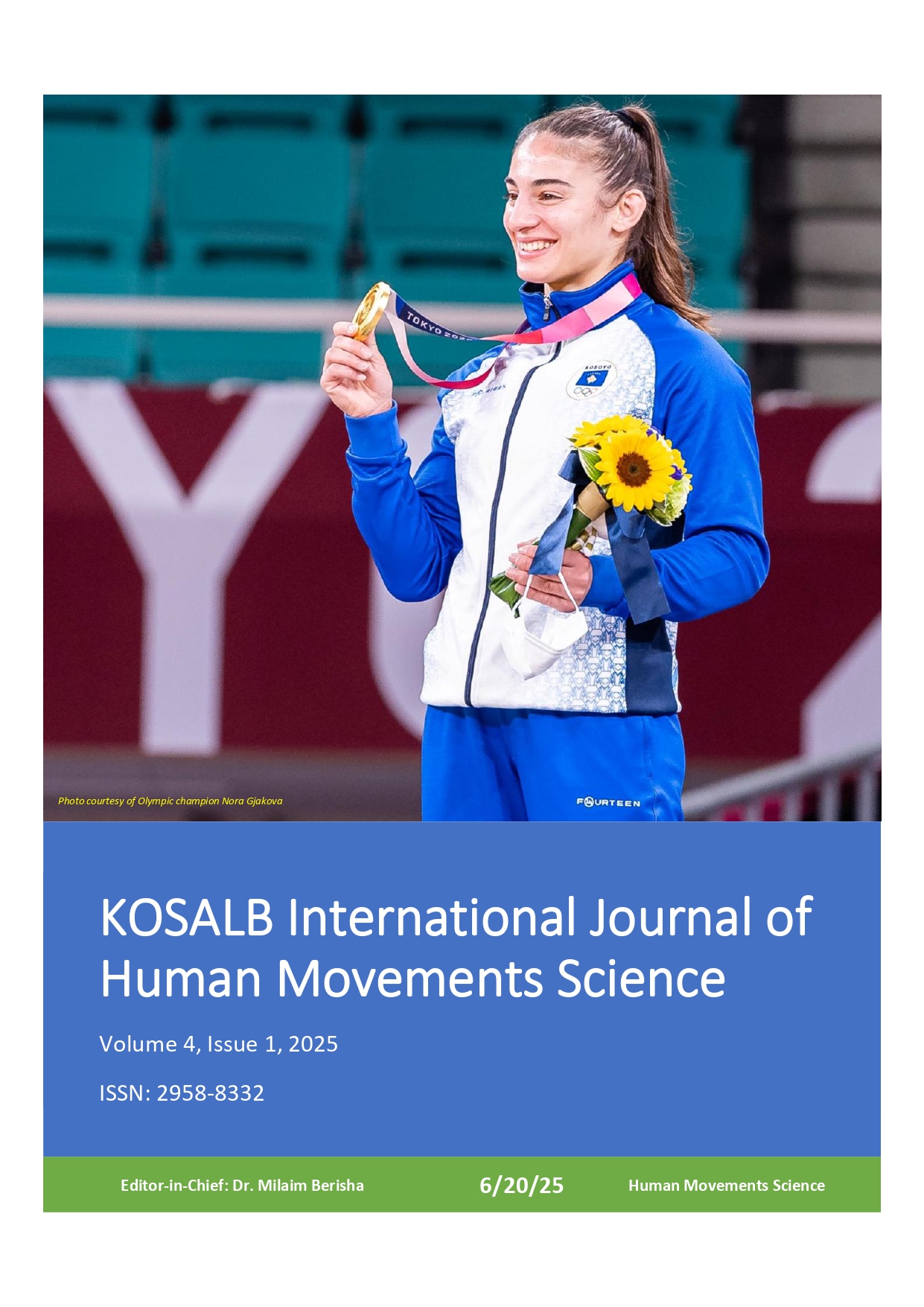Financial Resources and Challenges in Pilates Studio Management: A Qualitative Study
DOI:
https://doi.org/10.70736/2958.8332.kosalb.48Keywords:
Entrepenuership, Sustainability, Wellness, Regulation, TrainingAbstract
Study aim(s): This study aims to explore the financial resources and challenges faced by Pilates studio businesses, which have gained popularity due to the growing interest in body-mind focused exercise and healthy living. The research seeks to provide insights and strategic recommendations to enhance the financial sustainability of boutique fitness enterprises.
Methods: Based on the type of data, a qualitative research design was adopted. Data were collected through semi-structured in-depth interviews with 15 Pilates studio owners from various districts in Istanbul. Thematic content analysis was used to identify core financial themes and operational concerns from the participants’ narratives.
Results: The analysis revealed several significant financial challenges, including high rental and location costs, expensive equipment procurement and maintenance, rising instructor salaries, and complex legal and tax obligations. Participants also identified issues such as economic instability, seasonal fluctuations in customer numbers, and the negative financial impact of pandemic-related closures. Key success factors highlighted were customer retention, a strong brand identity, and long-term marketing strategies.
Conclusions: The study offers practical implications for studio managers, entrepreneurs, and policymakers by addressing the financial challenges specific to Pilates studios. Contributing to the sports management literature, it highlights the need for adaptive strategies to support the long-term viability of small-scale fitness businesses.
References
Heinrich, L. M., & Gullone, E. (2006). The clinical significance of loneliness: A literature review, DOI: https://doi.org/10.1016/j.cpr.2006.04.002
Braun V, Clarke V. Using thematic analysis in psychology. Qual Res Psychol. 2006;3(2):77–101. https://www.tandfonline.com/doi/abs/10.1191/1478088706QP063OA
Düzgün E. Fitness sektöründeki farklı yatırım modellerinin yönetim organizasyonlarının incelenmesi [master’s thesis]. İstanbul: İstanbul Gelişim Üniversitesi Sağlık Bilimleri Enstitüsü; 2019. https://hdl.handle.net/11363/1939
Eğmir RT, Hazman GG. KOBİ’lere sağlanan teşvikler ve KOBİ’lerin vergi algısı ilişkisi: Afyonkarahisar örneği. Cankiri Karatekin Univ J Fac Econ Adm Sci. 2017;7(2):225–246. https://dergipark.org.tr/tr/pub/ckuiibfd/issue/31317/321985
Gedik E. Pilates stüdyo işletmeciliğinin spor yöneticileri bakış açısından incelenmesi [master’s thesis]. İstanbul: İstanbul Gelişim Üniversitesi Lisansüstü Eğitim Enstitüsü; 2021. https://hdl.handle.net/11363/3132
Gümüş C. Müşteri memnuniyeti ve müşteri elde tutmanın müşteri sadakatine etkisi: Bir araştırma [master’s thesis]. İstanbul: Sosyal Bilimler Enstitüsü; 2014. http://hdl.handle.net/11630/2884
Durmuş NK. Spor kulüplerinin vergilendirilmesi. Türkiye Adalet Akademisi Dergisi. 2016;(27):245–278. https://dergipark.org.tr/tr/pub/taad/issue/52666/694146
Keskin B, Yüksel O, Altınok B, Şentürk A. Reformer Pilates egzersizi yapan sedanter kadınların yaşam doyumu ve fiziksel aktivite düzeylerinin incelenmesi. Sportive. 2022;7(2):131–144, DOI: https://doi.org/10.53025/sportive.1467385
Kumru S, Kasımoğlu M. İşletmelerde dijital dönüşümün stratejik yönetimi: Bir alan araştırması. Bilgi Ekon Yön Derg. 2022;17(2):139–159, DOI: https://doi.org/10.54860/beyder.1163107
Kurtipek S. Spor kulüplerine üye bireylerin spor kulübü kavramına ilişkin algılarının belirlenmesi: Bir metafor analizi çalışması. Spormetre. 2019;17(1):209–245, DOI: https://doi.org/10.33689/spormetre.474481
Nacar E, Devecioglu AŞS. Fitness merkezlerinde hizmet kalitesi, müşteri tatmini ve müşteri sadakati üzerine bir çalışma. J Acad Soc Sci. 2024;88(88):42–52.
DOI : 10.16992/ASOS.14727
Oğrak A, Kibar S, Kızıldere C. Ekonomik krizlerin küçük ve orta boy işletmeler (KOBİ) üzerindeki etkileri: Van örneği. Bolu Abant Izzet Baysal Univ J Inst Soc Sci. 2018;18(4):19–36, DOI: https://doi.org/10.11616/basbed.v18i41997.474929
Patton MQ. Qualitative research & evaluation methods: Integrating theory and practice. 4th ed. Thousand Oaks (CA): Sage Publications; 2014.
Ramazanoğlu F, Öcalan M. Spor işletmelerinde işletmecilik ve personel yönetimi anlayışı. Fırat Univ East Res J. 2005;4(1):36–40. https://dergipark.org.tr/tr/pub/fudad/issue/47056/591946
Sharma S, Singh G. Virtual fitness: Investigating team commitment and post-pandemic virtual workout perceptions. Telemat Inform. 2022; 71:101840, DOI: https://doi.org/10.1016/j.tele.2022.101840
Skinner J, Edwards A, Smith AC. Qualitative research in sport management. New York: Routledge; 2020, DOI: https://doi.org/10.4324/9780367854249
Sunay H, Kaya B. Türkiye, İtalya, Fransa ve İspanya spor sistemlerinin spor kulübü yapılanması düzeyinde karşılaştırılması. Spormetre. 2019;17(2):75–91. doi:10.33689/spormetre.521302, DOI: https://doi.org/10.33689/spormetre.521302
Uyar A. Müşteri memnuniyeti ile müşteri sadakati arasındaki ilişkinin yapısal eşitlik modeli ile incelenmesi: Otomobil kullanıcıları üzerine bir uygulama. Elektron Sos Bilim Derg. 2019;18(69):41–57, DOI: 10.17755/esosder.416556.
Yıldırım A, Şimşek H. Sosyal bilimlerde nitel araştırma yöntemleri. 11. baskı. Ankara: Seçkin Yayıncılık; 2018. https://hdl.handle.net/11511/70532
Yıldız TD. İşyeri açma ve çalışma ruhsatının (GSM) mevzuat ve madencilik sektörü açısından değerlendirilmesi. Çukurova Univ J Econ Adm Sci. 2020;24(2):145–169.
https://dergipark.org.tr/tr/pub/cuiibfd/issue/60073/795152
Yiğit O, Dinç F, Avanoğlu AE. Spor tesislerinin yeterlilik düzeylerinin müşteri sadakatine etkisi. Beden Eğit Spor Bilim Derg. 2024;18(3):497–506. https://dergipark.org.tr/tr/pub/bsd/issue/88803/1582231.
Downloads
Published
How to Cite
Issue
Section
License
Copyright (c) 2025 KOSALB International Journal of Human Movements Science

This work is licensed under a Creative Commons Attribution-NonCommercial 4.0 International License.




